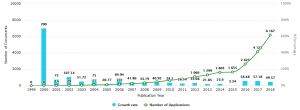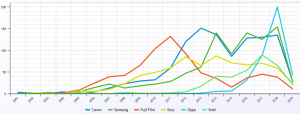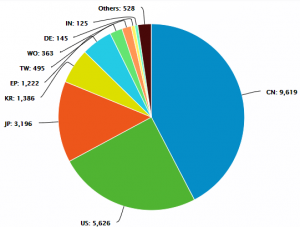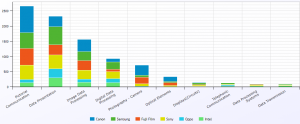Biometrics technology has advanced significantly over the recent years, and its usage for security and authentication purposes has now become commonplace. Face recognition is gaining popularity as a biometric technology as, unlike other forms of biometric solutions, face recognition requires no physical interaction by the person. Presently, facial recognition technology is being used for security and public safety purposes. However, it is also being applied in commercial applications such as social media platforms, and sectors like healthcare and retail.
Facial recognition captures, analyzes and compares patterns based on the person’s facial details. The process generally involves the following steps:
- Face detection to detect and locate human faces in images and videos.
- Face capture to convert the analog information into digital.
- Face matching to verify if this data matches a corresponding set typically stored in a database, thus authenticating the analog information (face of the individual).
In this article, we present both a taxonomy of the patent landscape and a competitor comparison of the companies working in facial recognition related technologies. These include companies such as Canon, Samsung, Fujifilm, Sony, Oppo and Intel.
General Trends
Facial recognition has found its place in consumer technology. A number of smartphones offer face unlock features, such as the iPhoneX, Google’s Pixel 2, Samsung’s Galaxy Note 9, and Motorola’s Moto G6. The overall published patents for facial recognition technology show a significant upward trend post 2015, as seen in Figure 1.
Figure 2 shows that the published applications covering facial recognition technologies for Oppo exhibit a sharp increase post 2015, whereas Fujifilm’s publication trend in similar technology areas shows a decline since 2011.
China is the preferred filing jurisdiction with more than 40% of the total published applications, followed by the US with a 25% share of the published applications, as seen in Figure 3. Facial recognition technology has been expanding rapidly in China over the last few years. Alipay, a mobile payment app used by more than 120 million people in China, allows a user to make payments using their face as credentials. Didi, China’s largest ride-hailing company, uses face recognition to help passengers verify the driver of the ride.
Technology Trends
Figure 4 displays the technology distribution for the key players in facial recognition technologies. Pictorial communication and data presentation are among the top technology categories under facial recognition. Canon and Samsung, the largest patent holders among the companies working in facial recognition, own a significant number of patents in these technology categories.
Our analysis of the emerging players in this space shows that a majority of them are based in China. Oppo and Xiaomi are the top emerging players in this technology space with published applications only after 2014. Companies in China have already implemented facial recognition in applications that are used by people daily. Megvii, an emerging player in China, is the creator of the world’s largest open-source facial recognition platform, Face++, which is used across various apps.
Alipay’s face recognition technology is used in Chinese hospitals to facilitate easy bill payment. OPPO uses SenseTime’s AI-powered face recognition technology in its smartphones. SenseTime became profitable in 2017 and claims it has more than 400 clients and partners.
While easier security and authentication have been the primary drivers behind the development and adoption of face recognition, it’s use in other areas is also growing. Read our complete report to get more insights into the key players and technology trends in facial recognition.
Get the Competitor Comparison Report.














